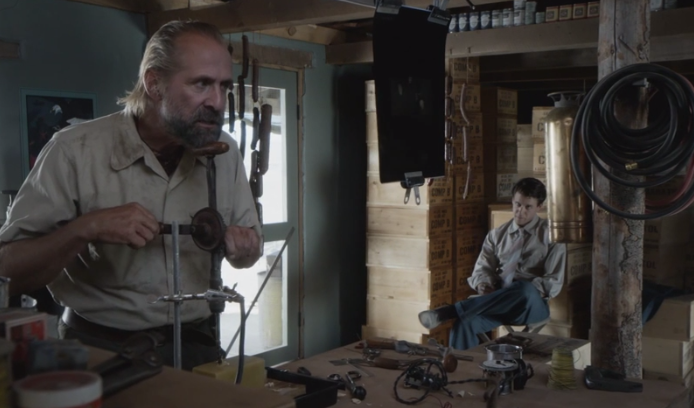The tenth episode of “Manhattan” finally delivers what viewers have been waiting for—a breakthrough on implosion. Frank Winter and Charlie Isaacs have teamed up with Lazar, Los Alamos’ explosives expert, to solve the complex problem of creating an implosion shockwave that will simultaneously compress a solid plutonium sphere to ignite a chain reaction.
While Frank and Charlie are busy worrying about shockwaves, a newcomer arrives on the Hill in search of answers. That person is Annie Liao, who has travelled all the way to New Mexico to find out about her husband Sid, the Chinese-American physicist who was shot in his car at the Los Alamos Main Gate. She is immediately whisked away to an interrogation room, where she meets X-4, the man in charge of Personnel at Los Alamos. After handing her Sid’s file, X-4 tells Annie that her husband was a spy, “not a hero.”
While there was never any recorded incident of a Chinese-American spy during the Manhattan Project, espionage was a serious threat. According to a recently declassified report commissioned by the Army in December 1945 and released by the Department of Energy just last month, Army investigators cataloged 1,500 leaks, 200 acts of sabotage and 100 confirmed cases of espionage during the Manhattan Project. During one incident, a suspect was fatally shot when he sped past a roadblock at a covert military base.
After struggling with the implosion problem for months, Frank gives Charlie’s thesis another read and finally has a breakthrough. If they can reflect the waves inwards, similar to an ocean wave reaching shallow ground, they can redirect the explosive blast inwards. Frank suggests using shaped charges to mold the shockwaves; by varying the burn rates in the explosive charges, they can create an implosion.
Implosion was perhaps the single most difficult challenge that physicists faced during the Manhattan Project. “In the beginning it was thought that about fifty scientists and engineers would be all of the staff needed to do the work to get these bombs designed and built,” recalls Ben Diven, a physicist who worked on implosion at Los Alamos. “It became obvious that it would take many times more people than that. Not only did the laboratory turn itself upside-down internally, but hundreds or thousands of people had to pour in to make up for the lack of personnel to tackle this much more difficult problem.”
The problem of creating the shaped charges was left to George Kistiakowsky, the leader of the Explosives Division on the Hill. “He was the only one that really knew about how to make explosive lenses in an innovative way,” recalls William Lowe, a chemical engineer at Los Alamos during the Manhattan Project. “They had to coordinate the absolutely accurate timing of setting off the lenses so that the explosion wave arrived and that compression of the little sphere, the center of the bomb, were at the same time, so it would squeeze it instead of blowing it apart. That was an awfully difficult problem to solve.”
After glancing over Frank’s notes, Glenn Babbit discovers that he has been secretly using Akley’s team to solve calculations on implosion. Glenn cannot believe that Frank trusts Charlie, “a plagiarist and a rat who steals from other scientists.” He is convinced that the entire team will go to jail if the Army finds out.
Meanwhile, Liza Winter’s worries about radiation continue after a “contamination” on the Hill. Dr. Alderman pulls Liza away from her desk to help scrub down some men who have been exposed to explosive residue. When she takes their contaminated clothes outside to the garbage, she notices the water from the clinic draining into the soil. She steals a Geiger counter from the lab and begins sweeping her home for radiation.
When Frank returns home he finds Liza in the backyard, burning all of their clothes in a trashcan. She is convinced that everything in the house is radioactive. When she goes to prove it, the Geiger counter is silent. Frank quickly realizes that Liza’s fear of radiation is all in her mind. The babies in the maternity ward were never radioactive; neither was their home. It had been revealed in an earlier episode that Liza had a history of mental illness; this radiation fear appears to be a new symptom. Frank gives Liza some of her old medicine—methylphenobarbital, an anti-convulsive—to calm her nerves.
With the implosion problem seemingly solved, Frank and Charlie need to test it. We can only wait until next week to know what will happen.





